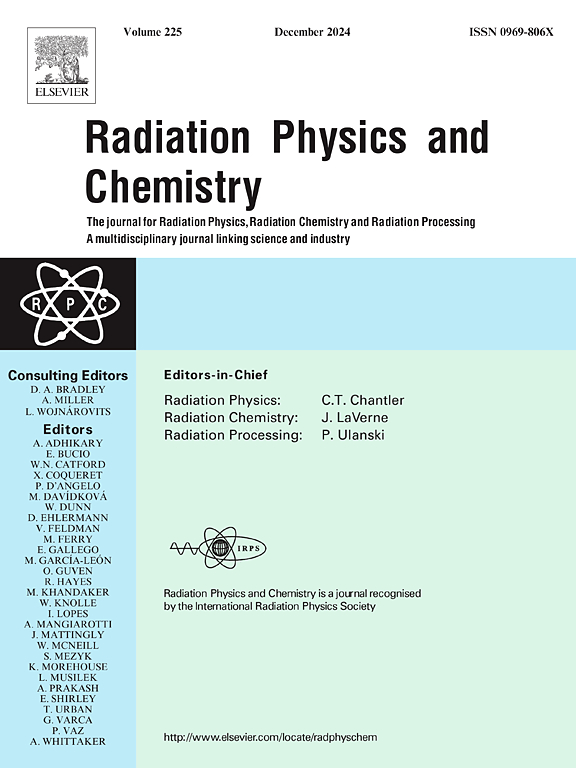Bridging the gap in radiation protection knowledge among medical students: A call for curriculum reform
IF 2.8
3区 物理与天体物理
Q3 CHEMISTRY, PHYSICAL
引用次数: 0
Abstract
Medical imaging enhances diagnostic accuracy and supports clinical decision-making. However, it poses high risks due to the ionizing radiation exposure. Awareness and knowledge of radiation protection and principles of ionizing radiation exposure is critical to minimizing the associated risks. The study aimed to assess the level of awareness and knowledge regarding radiation protection among medical students and to identify the gap in the radiation safety. A cross-sectional study was conducted among 372 students from various health programs using a structured self-administered questionnaire. Awareness and knowledge levels were categorized into five intervals ranging from弥合医学生辐射防护知识的差距:课程改革的呼吁
医学成像提高了诊断的准确性,支持临床决策。然而,由于电离辐射暴露,它具有很高的风险。对辐射防护和电离辐射照射原理的认识和知识对于尽量减少相关风险至关重要。本研究旨在评估医学生对辐射防护的认识和知识水平,并查明在辐射安全方面的差距。采用结构化的自我管理问卷,对来自不同健康项目的372名学生进行了横断面研究。认知和知识水平分为五个等级,从非常差到非常好。参与者的认知水平普遍较高(62.9%)。然而,知识得分明显较低,超过50%低于平均水平,只有(4.3%)表现出非常好的辐射防护知识。放射学学生的表现优于其他学科的学生,但在基础知识方面仍存在显著差距,如ALARA原理和剂量等效。中度正相关(r = 0.301, p <;意识和知识水平之间存在0.001)。在意识或知识方面,没有观察到性别、年龄组或学术水平的显著差异。虽然医学生对辐射防护必要性的认识相对较高(62.9%),但知识的缺乏突出了教育干预的必要性。将辐射安全讲座和培训纳入医学课程,可有效减少医护人员的辐射相关风险。
本文章由计算机程序翻译,如有差异,请以英文原文为准。
求助全文
约1分钟内获得全文
求助全文
来源期刊

Radiation Physics and Chemistry
化学-核科学技术
CiteScore
5.60
自引率
17.20%
发文量
574
审稿时长
12 weeks
期刊介绍:
Radiation Physics and Chemistry is a multidisciplinary journal that provides a medium for publication of substantial and original papers, reviews, and short communications which focus on research and developments involving ionizing radiation in radiation physics, radiation chemistry and radiation processing.
The journal aims to publish papers with significance to an international audience, containing substantial novelty and scientific impact. The Editors reserve the rights to reject, with or without external review, papers that do not meet these criteria. This could include papers that are very similar to previous publications, only with changed target substrates, employed materials, analyzed sites and experimental methods, report results without presenting new insights and/or hypothesis testing, or do not focus on the radiation effects.
 求助内容:
求助内容: 应助结果提醒方式:
应助结果提醒方式:


